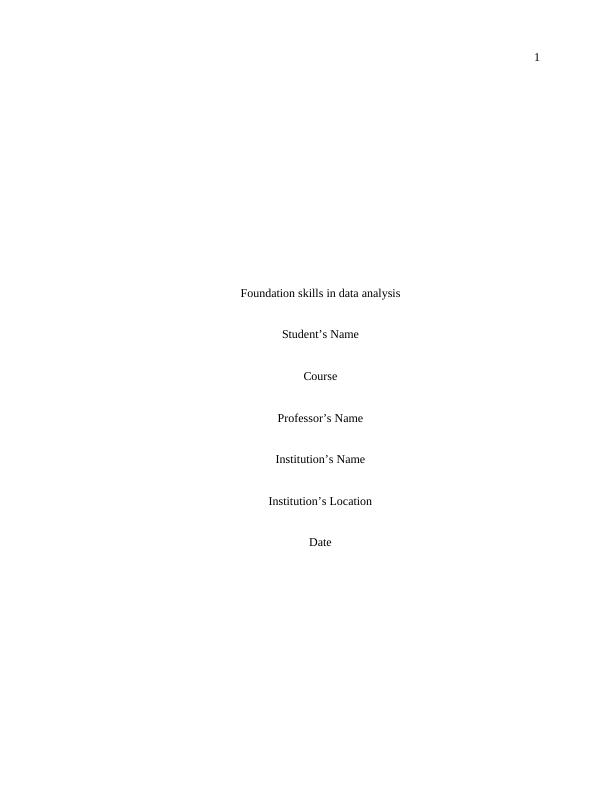Foundation Skills in Data Analysis
Evaluate the presentation of information in an organization's annual report, focusing on the suitability of charts, tables, and graphs used to represent data.
18 Pages2335 Words52 Views
Added on 2023-01-12
About This Document
This document discusses the foundation skills in data analysis, focusing on the evaluation criteria for suitable charts, graphs, and tables. It explores the common criteria for data presentation and provides examples of evaluated charts, graphs, and tables in different reports. The document also includes references for further reading.
Foundation Skills in Data Analysis
Evaluate the presentation of information in an organization's annual report, focusing on the suitability of charts, tables, and graphs used to represent data.
Added on 2023-01-12
ShareRelated Documents
End of preview
Want to access all the pages? Upload your documents or become a member.
Foundation Skills in Data Analysis
|16
|2604
|93
Data visualization Research 2022
|17
|2750
|24
MIS770A – Foundation Skills in Data Analysis
|18
|3089
|81
Applied Statistical Methods | Assignment
|7
|701
|14
Foundation Skills in Data Analysis
|18
|3015
|327
Foundation Skills in Data Analysis!
|16
|2667
|278




